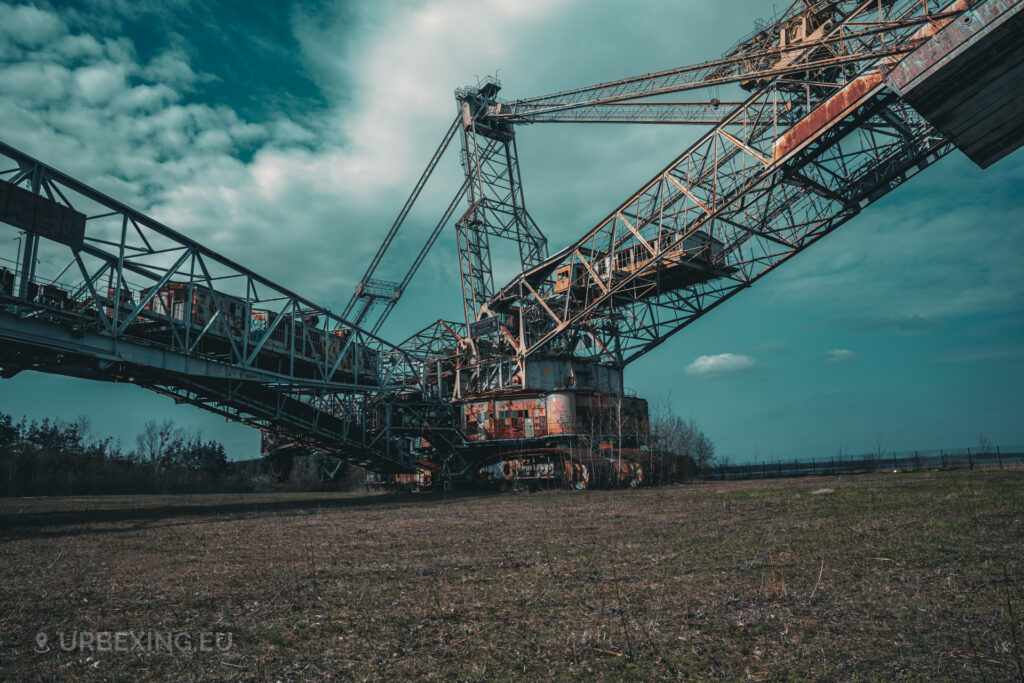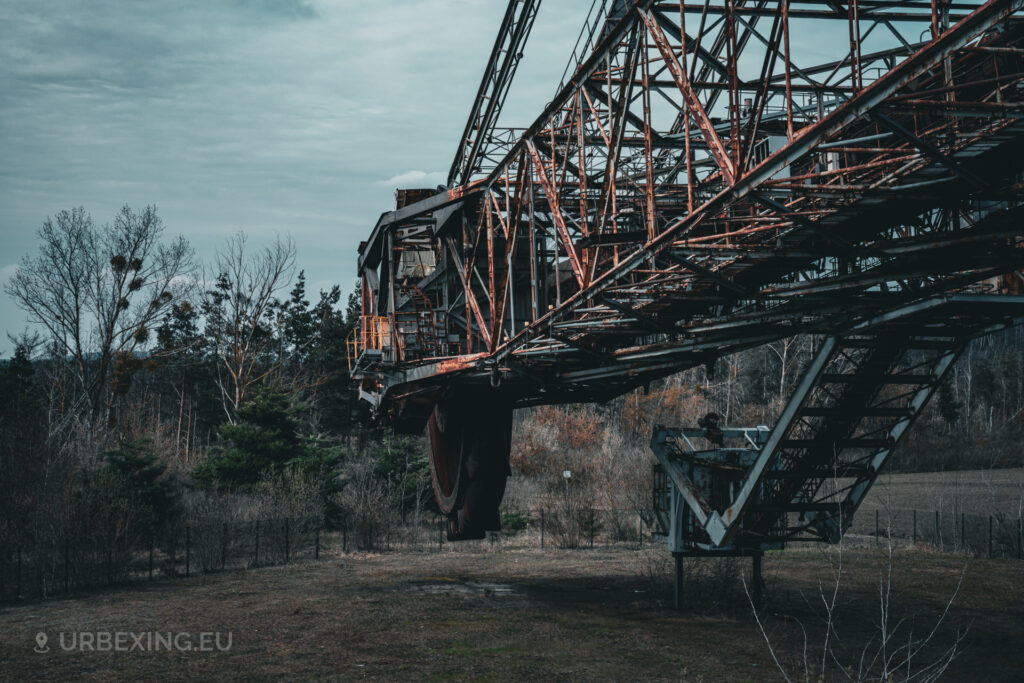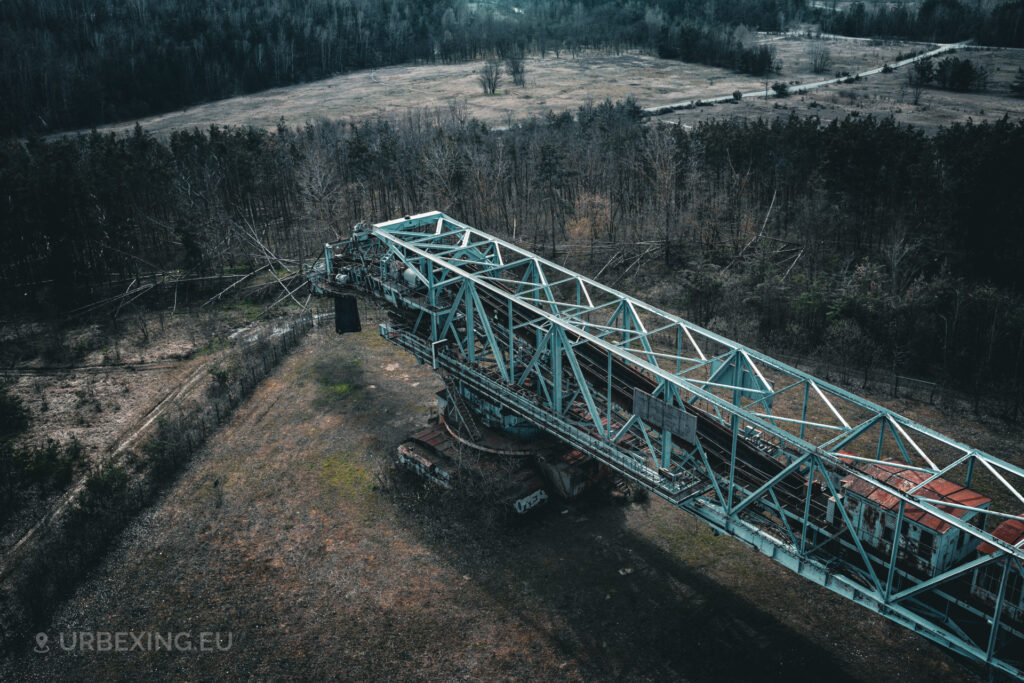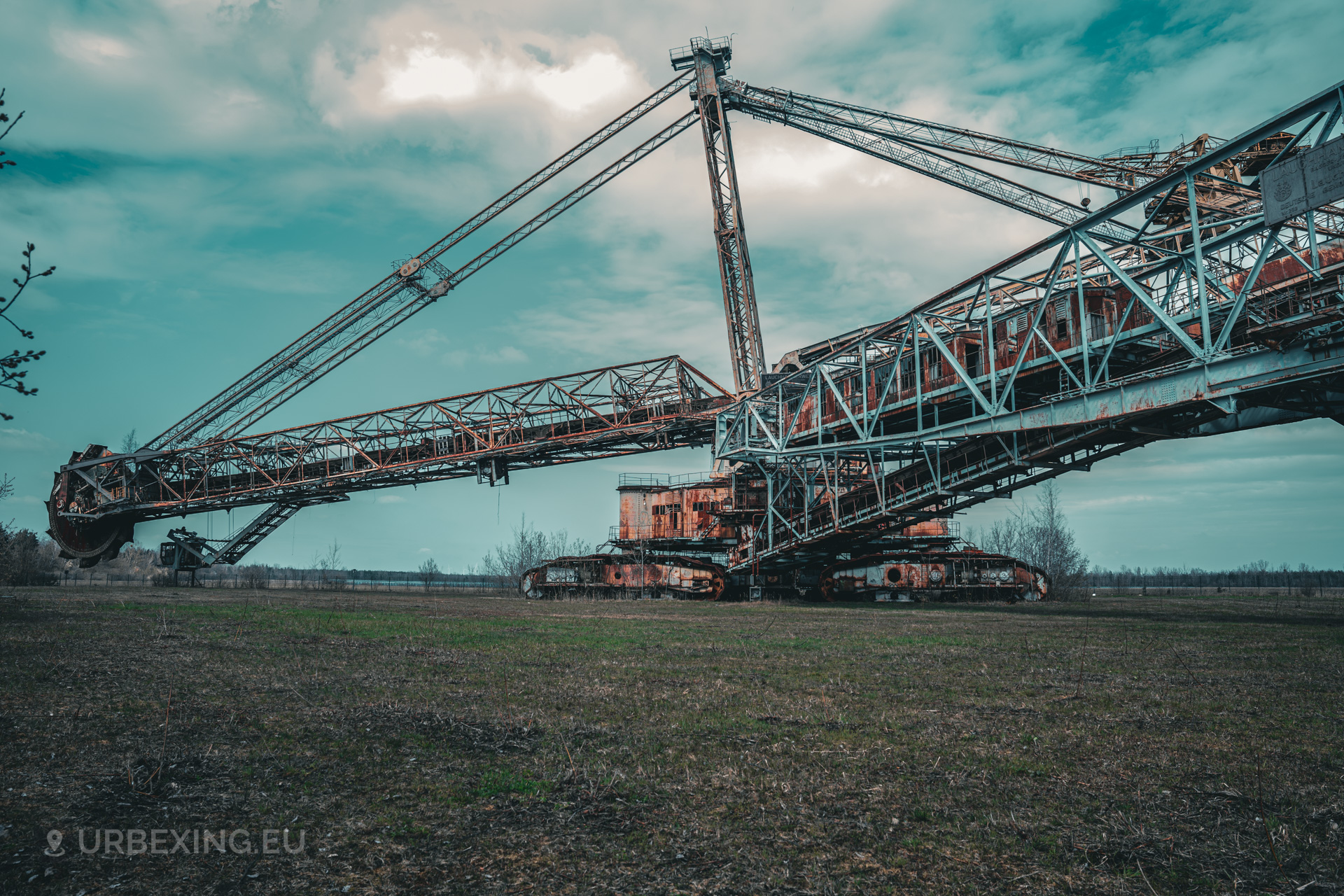Meet Bagger 1473, a retired bucket wheel excavator that spent an impressive 37 years in the lignite mining industry before its retirement in 2002. This colossal machine, standing at 171.5 meters in length and 50 meters in height, now resides in a neighboring field, serving as a poignant memorial to the area’s bygone lignite mining era.
With an operating power of 5,555 kilowatts, Bagger 1473 carried its 3850 tons of mass on a six-section crawler undercarriage, boasting a top speed of 6 meters per minute. The excavator’s mining prowess was considerable, with a theoretical capacity of 5,130 cubic meters per hour, facilitated by its ten 1.5-cubic-meter buckets and an impressive 57 pours per minute. The cutting speed clocked in at 3.73 meters per second, driven by a colossal bucket wheel with a 12.5-meter diameter.
Despite its grandeur, Bagger 1473 faced an inevitable fate. In January 2019, the towns backing the decision announced plans to dismantle the excavator due to wear, damage, and safety concerns. The machine had become a victim of vandalism and theft, rendering its maintenance financially unsustainable. The towns, however, opted to preserve certain parts, such as the iconic wheel.
Surprisingly, news reports of the planned demolition caught officials off guard. Although the excavator had been acknowledged for historical structure protection since 2002, it had never been officially listed as such. In response to the unfolding situation, officials swiftly rectified this oversight in February, cementing the bucket wheel excavator’s status as a historically significant and protected structure.
Today, as we explore this monumental relic of the past, it stands not only as a testament to industrial history but also as a reminder of the delicate balance between preservation and progress. Bagger 1473’s journey from the heart of lignite mining to a protected memorial field reflects the evolution of a once-thriving industry and the resilience of structures that bear witness to our shared history.











